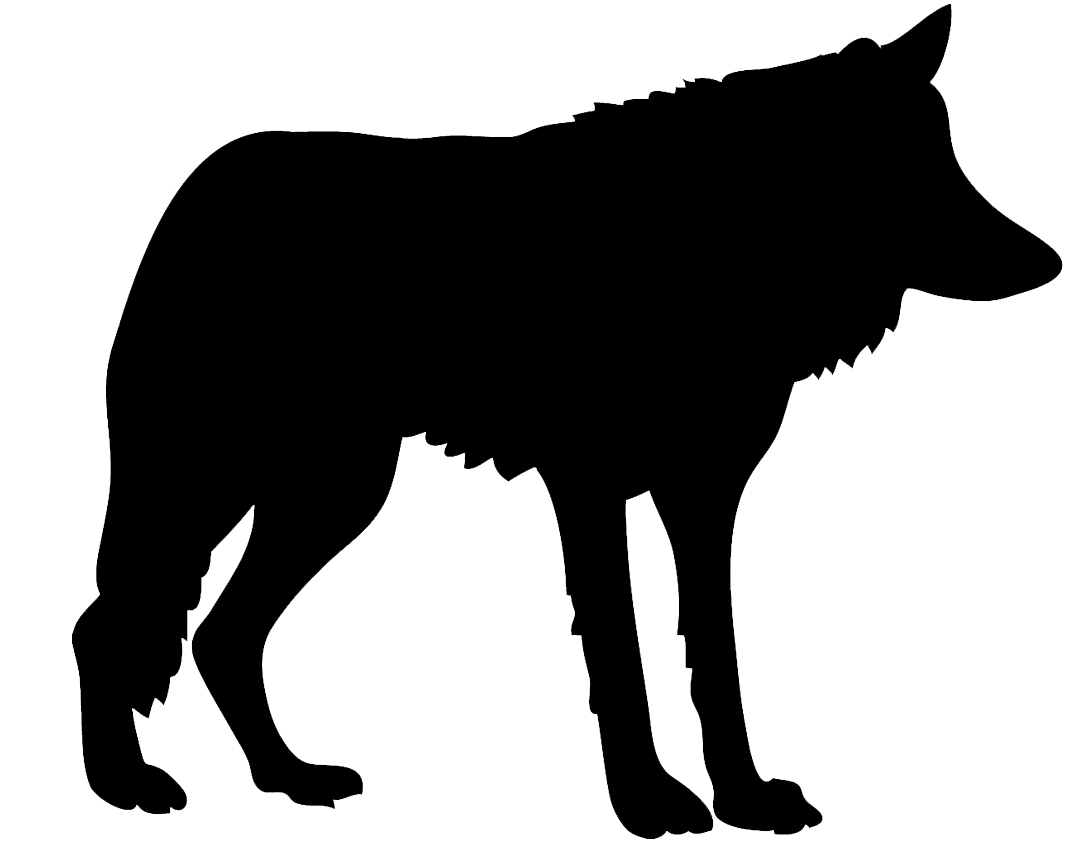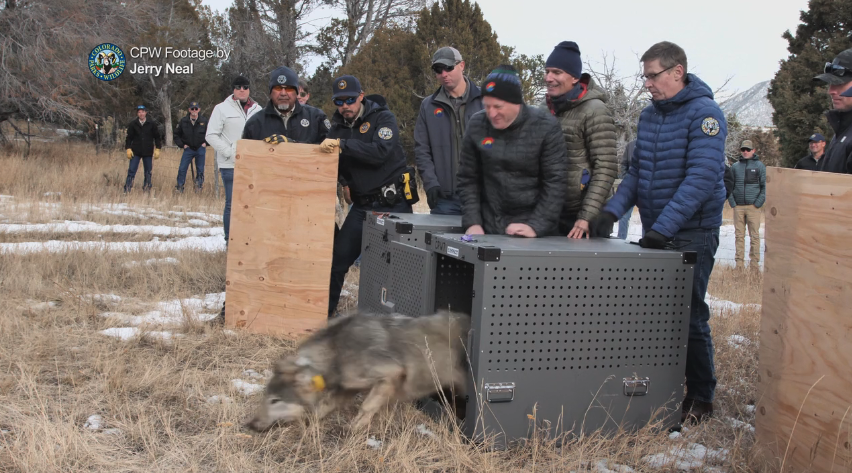LAKEWOOD, Colo. — More than two dozen organizations that represent agriculture and livestock producers in Colorado have filed a petition to delay future gray wolf reintroductions until depredations are addressed and mitigation tactics are fully implemented.
The Colorado Cattlemen's Association, based in Lakewood, announced the petition, which is addressed to the CPW (Colorado Parks and Wildlife) Commission, on Monday. In addition to that association, the other petitioners include Middle Park Stockgrowers Association, Colorado Farm Bureau, Club 20, and Colorado Wool Growers Association. Local livestock and stockgrowers associations from across the state also joined the petition.
A full list of the petitioners, as well as the formal petition, is available here and below.
The petition asks the CPW Commission to adopt a rule that would "pause further wolf introductions until specific wolf-livestock conflict mitigation strategies are fully funded, developed, and implemented." In the press release, the Colorado Cattlemen's Association said this will "ensure that CPW is equipped to manage wolf depredation and provide livestock producers with the necessary tools and resources before any wolves are put on the ground."

Covering Colorado
Colorado's wolf conflict coordinator and ranchers work to find common ground
The announcement came with a 43-page document of exhibits, which included several letters between Middle Park Stockgrowers Association, association member and Grand County rancher Conway Farrell, and CPW, as well as Farrell's application for chronic depredation permit, which was denied by CPW.
They have asked the CPW Commission to take up the petition at its Oct. 3 meeting, as well as a meeting scheduled for November, and accept the proposed rule before the end of the year.
Scripps News Denver reached out to CPW for comment. In a statement, they said "CPW remains committed to upholding the will of Colorado voters and implementing the unanimously approved Gray Wolf Restoration and Management plan and will continue to work with all stakeholders on the plan’s implementation."
Since the final Colorado Wolf Restoration and Management Plan was published in May 2023, Colorado Parks and Wildlife has said it will release 10 to 15 gray wolves per year for a total of 30 to 50 wolves over three to five years.
CPW has said the wolves that will be translocated to Colorado for this winter's reintroduction will be released in the northern zone, as shown in the map below. The exact location will not be publicized.

Those wolves in this second round of reintroductions will come from British Columbia, CPW announced on Sept. 13.
British Columbia is home to wolf packs that thrive in areas with little to no livestock presence, CPW Director Jeff Davis said in an exclusive interview with Denver7 ahead of the Sept. 13 announcement. This lines up with Colorado's efforts to ensure the wolves it translocates do not have a concerning depredation history.
"We feel like these are going to be good sourcing for setting up both the wolves and the ranchers for success moving forward," Davis said on Sept. 13.
Since the first reintroduction in December 2023, CPW has investigated and confirmed 27 wolf depredations on livestock, according to the latest data on CPW's depredation tracking page. However, the petitioners said that many other animals are missing in connection with those attacks. Almost all of those wolf-related livestock deaths and serious injuries happened in Grand County, Jackson County and Routt County.
The petitioners said the current wolf management plan has "insufficiently addressed these conflicts" and if CPW "adheres to the recommendations outlined in the petition, all parties will be better equipped to manage future conflicts." They are asking for these measures to be fully implemented before any new wolves are brought into Colorado.
The key requests made in the petition, as outlined by the Colorado Cattlemen's Association, are:
- Adopt a clear definition of "chronic depredation" and requirements needed to kill a wolf that has repeatedly preyed on livestock
- Develop, test and fund non-lethal methods to prevent depredations, and fully fund range riders (people who patrol around a herd on horseback or in vehicles) while also streamlining the process to allow producers to easily enroll in those available programs
- Conduct vulnerability site assessments on potentially impacted operations before releasing any more wolves
- Have a rapid response team in place and deployed to areas where wolves have preyed on livestock to mitigate future conflicts
- Be transparent in communication and consultation with local county officials, elected officials, communities, and livestock producers ahead of wolf releases
Currently, as the No. 1 request in the list above states, the wolf management plan does not have a specific definition for "chronic depredation."

In our interview with CPW Director Davis on Sept. 13, he addressed point No. 3 above, saying that in this second round of reintroductions, CPW will go into areas where wolves currently roam the landscape and where they plan to release the wolves, and will then work with ranchers to create "site vulnerability assessments" to identify any weak spots and the most effective coexistence techniques for that specific area.
"The site vulnerability assessments will utilize our expertise in identifying which non-lethal or coexistence techniques will be most applicable and effective for a particular area and a particular ranching operation," Davis explained.
Regarding point No. 2 above, Davis said more resources are going to become available to CPW with this winter's upcoming release, which can include more range riders, guardian dogs and other non-lethal methods that can cover more territory. The Western Landowners Association announced in December that five states, including Colorado, would receive more than $22 million thanks to two Regional Conservation Partnership Program grants to help livestock producers "remain economically viable and steward habitat in predator rich environments." Colorado is expected to have access to about $2 million of that total. Those funds will support non-lethal equipment and deployment over the next five years, Davis said. The money for these cost-sharing tools will become available to the state this November, and CPW will apply to use it.
With a focus on strengthening those programs, Davis said he feels that CPW is in a much better place now than it was ahead of the first release.

Background on wolf reintroduction and current status of the wolves
Colorado residents mandated the reintroduction of gray wolves to the state in the 2020 election, when they voted in favor of Proposition 114, which mandated that CPW develop a plan to start reintroducing and managing gray wolves in western Colorado and to take steps to begin those reintroductions by the end of 2023.
It passed with 50.91% of the vote, but with much of the "Yes" votes around the Front Range and most of the "No" votes outside of that area, with a few exceptions.

After two and a half years of Technical Working Group and a Stakeholder Advisory Group discussions, CPW published the finalized Colorado Wolf Restoration and Management Plan in May 2023, clearing the way for wolf reintroductions to start at the end of the year.
Read the full wolf restoration and management plan below or here.
Currently, Colorado is home to nine known adult wolves — two that moved naturally to Colorado and seven of the original 10 that were introduced in December — and four pups. The pups were born this year and were part of the Copper Creek Pack capture, which was spurred by multiple livestock depredations. CPW said they hope to release the pups together once they reach adult size, so they can hunt as a group.
Three adult wolves that were reintroduced have died. One was apparently attacked by a mountain lion, one was found in poor condition ahead of capture to relocate the Copper Creek Pack and a third was found dead on Sept. 10 in Grand County of an unknown cause. Travis Duncan, public information officer with CPW, told Denver7 on Sept. 12. that three of the translocated wolves dying in nine months is "not cause for alarm and is in line with typical wolf survival."








